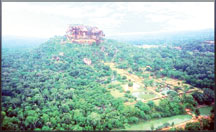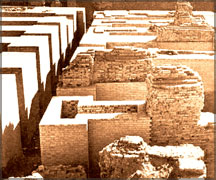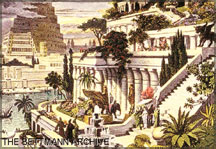|
DAILY NEWS ONLINE |
|
|
|
OTHER EDITIONS |
|
|
|
|
|
|
|
|
|
OTHER LINKS |
|
|
|
|
|
|
  |
|
Mysteries of Sigiriya and its landscape garden
|
|
|
In doing so, they have often contradicted each other and overstretched their imagination. Some distinguished scholars are of the view that the ruins of Sigiriya are those of a Buddhist meditation centre; others of great erudition dispute such claim, and stand by the Culavasma version.
Referring to Kasypa I (A.D. 478- A.D. 496), the great chronicle states: 'he betook himself through fear to Sihagiri (now Sigiri) which is difficult to ascent for human beings.... thence he built a fine palace, worthy to behold, like an other Alakamanda, and dwelt there like (the god) Kuvera.' The interlinear scripts in the Sigiri graffiti, which was discovered and deciphered by Dr. S. Paranavitana, also came under criticism many years after his death.
|
|
Lately, a learned scribe suggested that Pabbata-raja kings made the Sigiriya rock a centre of ritual worship and festivals, involving both rainmaking and fertility rites. This theory also does not hold water, because there is no convincing evidence to prove that Sigiriya was used for such purposes, after Kasyapa left the scene.
The most celebrated and enduring attraction of Sigiriya rock, the famous frescoes attributed to Kasyapa I, are interpreted by different scholars by different yardsticks. The Sigiriya frescoes vis-a-vis Kasyapa is not mentioned in the Culavamsa.
The Mahavamsa, which is the oldest chronicle of Sri Lanka, has the story Kasyapa and Sigiriya totally expunged. Yet the Sigiriya frescoes are the main attraction on the historic rock, believed by many to have been executed during Kasyapa's reign.
|
|
In his book, The Story of Sigiriya (1972), Dr. S. Paranavitana describes of an ancient Sinhala tract on Sigiriya, named as, Sihigiri-vitara, which was supposed to have laid bare more information about the Sigiriya story and connect Kasyapa with the frescoes.
However, the origin of Sihigiri-vitara is disputed by some scholars. The ruins on Sihigiriya rock are also a puzzle to the discerning visitor who finds that they do not appear to be of a palace, let alone a meditation centre.
Sigiriya Garden was unknown and undiscovered until 1980s.
Neither the archaeologists who laboured for centuries over Sigiriya, nor the Culavamsa ever mention that there was a highly elaborate garden on the grounds of Sigiriya rock.
It was only in the 1980s that relentless excavations done by the men of the Department of Archaeology brought to surface the remains of what had been a vast landscape garden complex sited at the foot of Sigiriya rock. It was only subsequently that the new found garden was restored, landscaped, 'dressed up' and came to be maintained by the dedicated men of the Central Cultural Triangle.
It can be only presumed that after Kasyapa, the structure on the rock and the landscape garden on the ground were probably neglected, or used by interested parties for religious, aesthetic, or sensual pursuits.
As if we did not have enough Sigiriya mysteries to thrill our tried minds, now the Ministry of Tourism adds yet another mind-twisting mystery to the plethora of history's mysteries surrounding the famous rock, by issuing a statement to the effect that Sigiriya has "the oldest surviving landscape garden in Asia" (Daily News Sep. 24) That is a distortion of historical facts, says Dr. W.H. Wijepala, Director General of the Central Cultural Triangle and the former Director General of Archaeology, whom I interviewed.
He confirmed my conviction that the Sigiriya garden is neither the "oldest" nor the "oldest surviving landscape garden in Asia". Its stupendous scale and elaborate planning, however, show the hand of an artistic genius behind it.
In the absence of concert evidence, the only way to connect Kasyapa with the landscape garden of Sigiriya is to presume that he who ruled Sri Lanka during the Gupta period of India (A.D. 320- A.D. 600), probably borrowed the idea from the magnificent landscape gardens of the seven earlier cities of Delhi.
The latter were tendered by the Guptas, and ranked as the oldest landscape gardens in Asia, after the Hanging Gardens of Babylon. The old Delhi landscape gardens were first built around 500 B.C., while the Hanging Gardens of Babylon first came up in 600 BC.
It is very likely that the Indian guild artists borrowed the idea of landscaped gardens from the Babylonians, and made old Delhi the fabled garden city of ancient India.
The gorgeously landscaped Mahamegavana garden of King Mutasiva (A.D. 307 - A.D. 247) at Anuradhapura could have been also modeled after the old Delhi gardens, or the Hanging Gardens of Babylon.
The landscape gardens of the seven earlier cities of Delhi Around the capital city of Delhi are seen today the remains of seven earlier cities that go back three thousand years. Their ancient ruins are interspersed with gorgeous landscaped gardens, imposing fortresses, opulent palaces and onion domed mosques merging harmoniously into the modern city, making it an exciting travel experience.
The seven cities, each with a unique characteristic of its own were Indraprastha, Lal Kot, Quila Rai Pithora, Siri, Jahanpanah, Tughlakabad, and the ruined fortress east of the imposing Qutab Minar.
Excavations made in and around Delhi show that 5000 years ago the Indus valley civilization extended up to the present-day Delhi.
About 1400 BC, Delhi was called Indraprastha, and was built under the direction of King Yudhishtir, Ruins of Indraprastra have been found inside the premises of the Purana Quila excavations. In 1000 BC, there was a Mauryan King named, 'Dhilu'.
Because of him Delhi got its name. During the period A.D. 320-600, the Guptas ruled over Delhi, and at this time, this region was called Golden city and the era was called the Golden era. Kings of Gupta dynasty founded by Chandragupta I, were the great patrons of art, culture, languages, mathematics and science.
Many of the finest paintings of ancient India were executed during Gupta period (A.D. 320-600) which marked the most prosperous era in Indian history. The best example of such paintings are the murals at Ajanta caves which are located at western Maharashtra.
They were part of local Vakataka kingdom which had matrimonial alliances with imperial Guptas. The rich and sensuous life at Vakataka court and of Gupta India in general is realistically displayed in these colourful and vibrant murals at Ajanta.
Famous for the meticulous details of nature and the urban landscape, they influenced or represented the aesthetic sensibilities of the Guptas. Some scholars are of the view that the Sigiriya frescos also show shades of Ajanta influence.
The Hanging Gardens of Babylon Babylonians were a separate segment of the ancient Aryan race. Some of these nomadic Aryans went their separate ways in their migratory habits and began a settled lifestyle in the Indus valley in the northwestern India. They came to be named as Indo-Aryans.
While maintaining trade links with the Babylonians, the Indo-Aryans probably borrowed the idea of landscape gardening from the Hanging Gardens of Babylon, for developing the gardens of seven earlier cities of Delhi.
Located in Babylon near modern-day Baghdad, Iraq, the Hanging Gardens of Babylon are said to have been laid out by about 600 B.C. on a brick terrace by King Nebuchadnezzar II for one of his wives.
The writings of a Babylonian priest describe them as approximately 400 feet square and 75 feet above the ground. His account says slaves working in shifts turned screws to lift water from the nearby Euphrates River to irrigate the trees, shrubs and flowers.
"The approach to the Garden sloped like a hillside and the several parts of the structure rose from one another tier on tier.. On all this, the earth had been piled.. and was thickly planted with trees of every kind that, by their great size and other charm, gave pleasure to the beholder... The water machines (raised) the water in great abundance from the river, although no one outside could see it." - Diodorus Siculus.
(The writer is the author/publisher of two new books launched recently. They are: "Rituals, Folk Beliefs & Magical Arts of Sri Lanka, the New Version" and "Alien Mysteries in Sri Lanka & Egypt, the New Version". They are available at leading bookshops)
|
|




